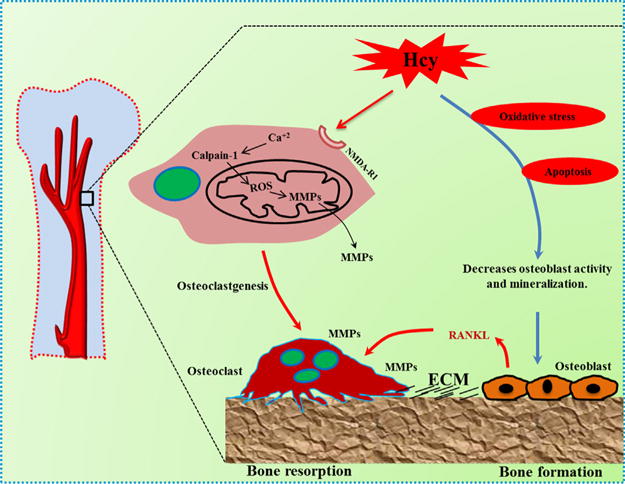Fig. 1.

Schematic mechanism of homocysteine-mediated bone remodeling via oxidative stress. The increased homocysteine level elevates intracellular calcium by agonizing NMDA-RI. This in turn increases activation of calcium dependent calpain-I, which disrupts the mitochondrial membrane potential. Thus increasing reactive oxygen species (ROS) which further activates MMPs, resulting in matrix degradation. Increased homocysteine levels also induces apoptosis via ROS-mediated oxidative pathways which further switches off osteoblast activity and mineralization, by up regulating RANKL expression, leading to osteoporosis by reducing bone formation.
